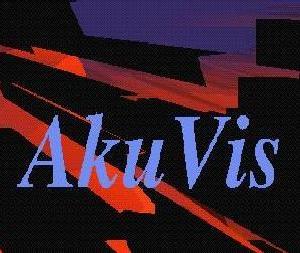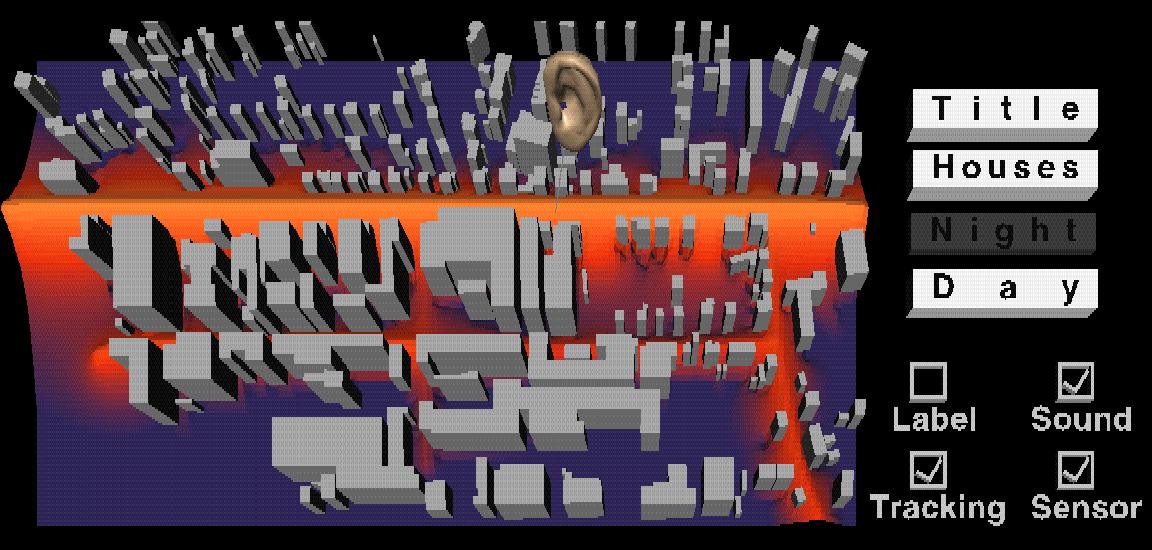



The AkuVis project is under development by researchers of the University of Bielefeld and other institutions. It seeks to create a highly interactive virtual environment of modelled acoustic data in order to sensitize and improve human decision-making in real world tasks. In particular, it attempts to enhance the integrated understanding of noise data as a basis for environmental health protection and decision-making.
A well established method of visualizing data of environmental noise pollution are 2D plots. However, decision makers are often uncomfortable with the conventions used and the complexity inherent in these plots. In AkuVis, acoustic data are mapped into a 3D visual and acoustic space that provides a much higher "bandwith" and can be explored interactively. Visually, noise pollution data modelled by the German TÜV are mapped onto the three dimensions (x/y for position, z for dB level) of an "acoustic landscape".
Users experience a richly detailed, interactively changeable landscape illustrating the noise conditions in a city district of Bielefeld. The landscape is rendered in real time as high-resolution stereoscopic images for a tracked user.
 Animation (2.5M)
Animation (2.5M)
Acoustically, the landscape can be explored by way of a "virtual ear", i.e. a virtual sensor in the shape of a human ear. The "ear" is controlled by a Flock-of-bird tracking device that can be moved across the "acoustic landscape" and lifted up in the z dimension. Its position determines the sound level, frequency, and kind of sound samples played to provide an acoustic impression of the noise conditions in the modelled city environment.
The Responsive Workbench, developed by German National Research Center for Information Technology (GMD), is used as output device. It allows to fuse a real workbench (used as table for the acoustic landscape) and virtual objects (the landscape itself) as well as virtual sensors (the ear) and effectors (sliders to change daytime and noise level).
system documentation (internal information)
Project team:
Collaborators:
Student staff:
Contact: ipke@TechFak.Uni-Bielefeld.DE
Research in the AkuVis Project is partially supported by the Landesinstitut für den Öffentlichen Gesundheitsdienst (LÖGD).